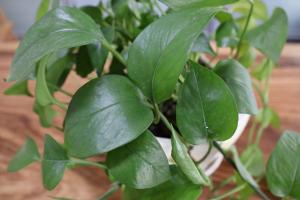How to Top Tomato Plant
Tomatoes are one of the varieties of fruit that are relatively easy to grow even for novice gardeners. However, to get the best yield possible, it is important to know the proper way to prune or top tomato plants. Topping helps to increase the production of fruit, and also keeps the plant healthy and disease-free. In this article, we will discuss step-by-step how to top tomato plants for maximum yield.
Step One: Get the Right Tools
Before you start topping your tomato plants, make sure you have the right tools on-hand. You will need a sharp pair of pruning shears, a pair of gloves, and a clean cloth or tissue to wipe down the shears after each cut. Make sure that your shears are sharp, as dull shears can cause damage to the plant.
Step Two: Find the Right Time to Top
The best time to top your tomato plants is when they are young and have several leaves. The plant should be at least 12 inches tall, and have at least two sets of branches. It is also important to top the plant when it is dry, not wet. Wet leaves can be more susceptible to disease, and pruning when the plant is wet can spread disease from one plant to another.
Step Three: Identify the Suckers
Suckers are new shoots that grow in the leaf axil, or where the leaf meets the stem of the plant. These suckers can take away energy and nutrients from the main stem, which can result in lower fruit production. As such, it is important to remove them as soon as possible. Identify the suckers as they grow, and remove them as close to the main stem as possible.
Step Four: Remove the Top of the Plant
Once your plant has reached about 2.5 to 3 feet tall, it is time to start topping. Use your shears to remove the top of the plant, or the stem that holds the flowers and leaves. Make sure to cut the stem at a 45-degree angle, and not leave any sharp edges or stubs behind. This will help the plant heal quickly and avoid disease.
Step Five: Continue to Monitor and Prune
After you have topped your tomato plant, continue to monitor it for suckers and other signs of disease or infestation. Remove any new suckers that grow, and pinch off any yellow or diseased leaves to promote healthy growth. Regular pruning ensures that the plant is healthy and able to produce a high yield of fruit.
In conclusion, topping tomato plants is an important step in ensuring a healthy and productive garden. By having the right tools, timing your pruning correctly, identifying suckers, removing the top of the plant, and continuing to monitor and prune, you can maximize your tomato plant's yield and enjoy a fresh harvest all season long.

 how many times do yo...
how many times do yo... how many planted tre...
how many planted tre... how many pine trees ...
how many pine trees ... how many pecan trees...
how many pecan trees... how many plants comp...
how many plants comp... how many plants can ...
how many plants can ... how many plants and ...
how many plants and ... how many pepper plan...
how many pepper plan...
































